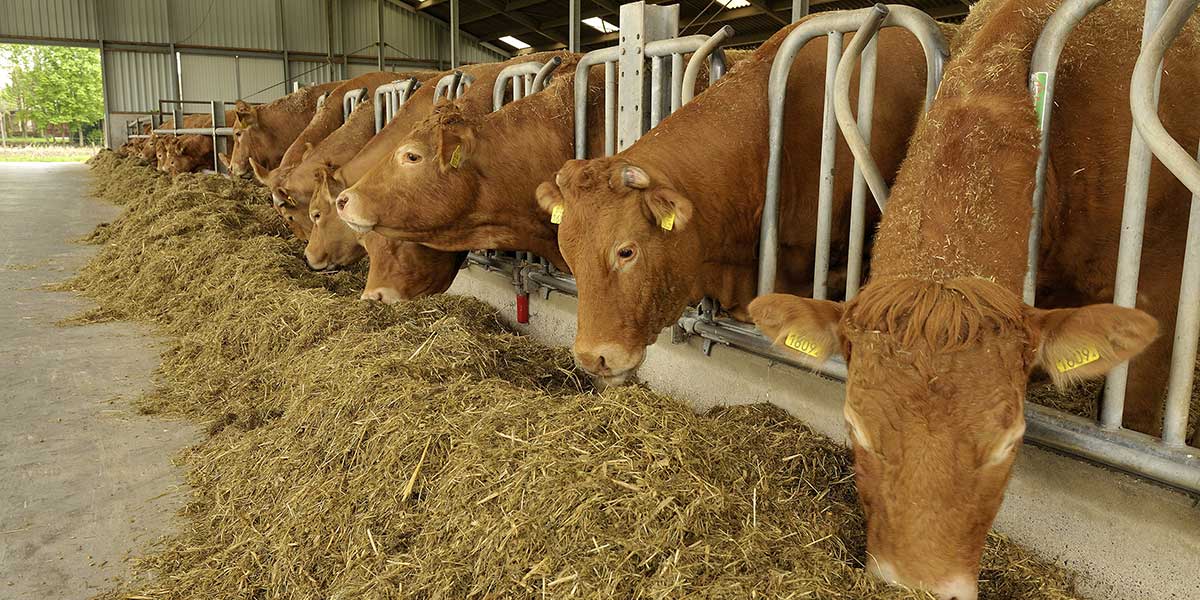You may be thinking to yourself, “What the heck is transfaunation?” Or, perhaps you are already familiar with the term. If you have experience with a large dairy farm, you probably already know. I think a lot of us have seen cows (usually of the dairy variety) with windows into their abdomen at fairs and perhaps even at a farm you visited. Though the idea of putting a window in the side of a cow is cool enough on its own, it does actually serve a purpose. Before we explore that purpose, let me first explain a little about the stomach and the window.
The stomach of a cow is divided into four compartments. The rumen is the largest of these compartments, and I mean large. In a Holstein cow the rumen can hold over 40 gallons! The rumen can also be thought of as a holding and fermentation vat. Being prey animals in the wild, evolution has designed cows to go out and eat as much food as possible while it is safe. Obviously there isn’t time to properly chew your food if you are eating it as quickly as possible. This is why we see cows chewing their “cud” almost constantly when they are relaxed. They will regurgitate a wad of material from their rumen back into their mouths and chew it properly so that it can pass to the other stomach compartments and eventually into their intestines. The environment inside the rumen is not very acidic like it is in most other species. This is because the cow is constantly regurgitating the material and an acidic environment would injure their esophagus, and also because of the bacteria that live in the rumen and help break down the cow’s food. A very acidic environment would kill off the bacterial colonies and the cow would not be able to properly digest her food. So, what I really want you to take away from this whole paragraph is that the bacteria inside the rumen of cows is of utmost importance to their survival. Got it? Good.
Now, the window. A healthy cow is chosen by her owner to undergo this procedure and become the source of rumen material for any cow that may need it in her lifetime. A veterinarian will cut into the abdominal wall of the cow and into the rumen, from there a plastic cannula is placed in the incision site. This cannula is what holds the side of the abdomen open permanently. A plastic screw-in plug is usually placed in the opening that can be removed whenever needed. Cows recover well from the surgery and do not even notice their new accessory.
Ok, enough about all that. What is transfaunation?! Transfaunation is the transfer of one cow’s digestive flora into another cow. Digestive flora is the healthy bacteria, protozoa and fungi that live in the animal’s (all animals, yes, even humans!) digestive system and help break down food. If a cow is sick, she will very often stop eating and/or drinking. Or, if she has to be treated with antibiotics they can kill off the good and the bad bacteria in her system. Yes, it’s important to get rid of the bad bacteria that are making her sick, however, when the good bacteria are also killed off it will inhibit her ability to digest food and absorb all the nutrients she needs. For whatever reason a cow loses her healthy bacteria, it is imperative that she gets it back quickly or her health will continue to decline. That is where our cannulated cow comes in to save the day, and possibly the life of her barn mate. The farmer can simply reach into the rumen of the cannulated cow and take out some of the material in there. He will then feed it to the sick cow (cows will eat just about anything), or if she is not eating, they can force it into her with a stomach tube. This rumen material is filled with all the healthy microorganisms that our sick cow needs to have recolonize her rumen and make her a happy, healthy, milk producing cow again. So you can see, the job of the cannulated cow is very important, and the procedure of transfaunation can save a life.
Lisa Podwirny is the owner of Ketchum Mfg. Connect with her on Google+!






